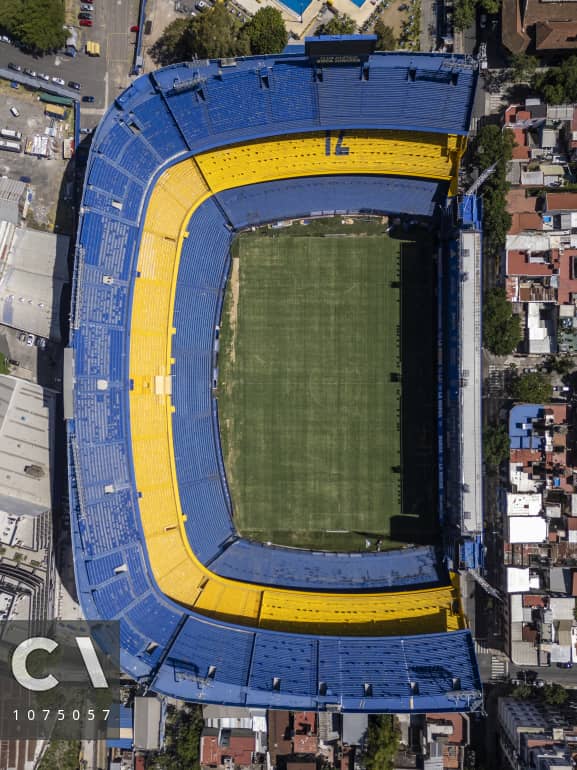
Table of Contents
- Introduction
- Historical Evolution of Stadium Design
- Smart Stadiums: The Rise of Digital Infrastructure
- Sustainability and Eco-Friendly Stadium Architecture
- Immersive Fan Experience: AR, VR & Beyond
- AI, Data Analytics, and Personalized Engagement
- Security, Health, and Safety Technologies
- Modular and Multi-Functional Stadiums
- Stadiums as Urban Hubs and Smart Cities
- The Role of Esports and Digital Football Arenas
- Financing the Future: Economic Models for Next-Gen Stadiums
- Globalization of Stadium Standards
- Cultural Identity and Architectural Innovation
- Challenges and Controversies Ahead
- Case Studies: Stadiums of the Future (2030 and Beyond)
- The Future Fan: Behavioral Shifts and Expectations
- Conclusion: A New Era of the Football Arena
Part 1: Introduction
The football stadium has long been more than just a place to play matches. It’s a cathedral of modern sport, a space where history is written, and dreams are born. As we step deeper into the 21st century, the football stadium is undergoing a dramatic transformation — technologically, economically, socially, and architecturally. From the grand coliseums of old to the ultra-connected, eco-conscious arenas of today, the stadium is not only evolving to meet fan expectations but also to anticipate the needs of tomorrow’s world.
With the rise of *smart technologies, **sustainable building practices, **immersive experiences, and *data-driven engagement, the football stadium is no longer just a venue — it is becoming a platform. A platform that integrates urban development, digital infrastructure, entertainment, and environmental consciousness.
In this in-depth exploration, we’ll examine how football stadiums are being reimagined — not just to host matches but to redefine how we *consume, **experience, and *live football.
Part 2: Historical Evolution of Stadium Design
- Origins: Ancient amphitheaters to early 20th-century bowl-style stadiums.
- Post-War design: Concrete mega-structures of the 1950s–1980s.
- The modern wave: All-seater stadiums post-Hillsborough disaster.
- Case examples: Maracanã (Brazil), Wembley (UK), San Siro (Italy).
Part 3: Smart Stadiums – The Rise of Digital Infrastructure
- 5G connectivity and edge computing inside stadiums.
- Stadium apps for seat service, live stats, multi-angle replays.
- Digital signage, ticketless entry, facial recognition systems.
- Role of IoT (Internet of Things) in crowd control and fan data collection.
- Examples: Tottenham Hotspur Stadium, SoFi Stadium (LA), Allegiant Stadium (Las Vegas).
Part 4: Sustainability and Eco-Friendly Architecture
- Net-zero carbon goals for stadiums.
- Rainwater harvesting, solar panels, and wind power integration.
- Use of recycled and sustainable materials in construction.
- Transportation links to reduce emissions (bike lanes, electric shuttles).
- Mercedes-Benz Stadium (USA), Forest Green Rovers Eco Park (UK), Education City Stadium (Qatar).
Part 5: Immersive Fan Experience: AR, VR & Beyond
- In-stadium AR glasses for real-time player stats.
- At-home VR experiences and virtual season tickets.
- Holographic replays and mixed reality tunnels.
- Interactive LED screens and light shows.
- Digital twin stadiums in the metaverse.
Part 6: AI, Data Analytics, and Personalized Engagement
- Predictive AI for crowd movement and resource allocation.
- Data-driven food/beverage sales, traffic flows, and fan engagement.
- Customized content delivery via apps and push notifications.
- Loyalty programs powered by blockchain and NFTs.
- Real-time sentiment analysis via social media.
Part 7: Security, Health, and Safety Technologies
- Biometric scanning and real-time surveillance.
- AI-based facial recognition for crowd management.
- Contactless entry, thermal scanning, pandemic preparedness.
- Emergency evacuation simulation systems.
- Stadiums as safe spaces post-COVID and in high-risk regions.
Part 8: Modular and Multi-Functional Stadiums
- Retractable seating and pitch modules.
- Convertibility: football, concerts, esports, corporate events.
- Mobile stadiums and demountable architecture (e.g., Stadium 974 in Qatar).
- Urban integration with malls, offices, hotels.
- Revenue optimization through multi-use planning.
Part 9: Stadiums as Urban Hubs and Smart Cities
- Stadium-led regeneration of urban areas.
- Integration into smart city plans: transport, energy grids, Wi-Fi networks.
- Case studies: Tokyo National Stadium, LA Stadium District, Qatar 2022.
- Digital inclusion and community benefit initiatives.
Part 10: The Role of Esports and Digital Football Arenas (800 words)
- Rise of football gaming (FIFA, eFootball) as spectator events.
- Stadiums designed for live gaming and digital sports.
- Gamification of fan experiences within stadiums.
- New revenue models from hybrid sport-digital events.
Part 11: Financing the Future – New Economic Models
- Public-private partnerships and naming rights.
- Blockchain and fan-owned investment models.
- Stadium revenue diversification: shopping, housing, dining.
- Risks of debt financing and financial fair play compliance.
- Lessons from failed and successful mega-stadium projects.
Part 12: Globalization of Stadium Standards
- FIFA/UEFA/AFC/CAF regulations and how they shape stadium designs.
- Rise of new football markets in Africa, Asia, and North America.
- Standardized safety, accessibility, and broadcast capabilities.
- Influence of mega-events like World Cups and Olympics.
Part 13: Cultural Identity and Architectural Innovation
- Stadiums as reflections of national pride and culture.
- Incorporating local materials, motifs, and heritage in design.
- Role of famous architects in stadium innovation (Herzog & de Meuron, Populous).
- Emotional architecture: lighting, sound design, and fan psychology.
Part 14: Challenges and Controversies
- Environmental impact of mega-construction projects.
- Gentrification and displacement of local communities.
- High ticket prices and stadium elitism.
- Surveillance, privacy, and data security concerns.
- Stadiums as soft-power tools and political symbols.
Part 15: Case Studies – Stadiums of the Future
- Lusail Stadium (Qatar): climate control and sustainability.
- Allegiant Stadium (USA): smart tech and tourism.
- China’s mega-stadium projects and 100,000+ capacity plans.
- Africa’s rise: Nigeria, Morocco, South Africa’s next-gen blueprints.
- Digital twin stadiums (Manchester City, Real Madrid).
Part 16: The Future Fan – Behavioral Shifts
- Gen Z and the digital-first stadium experience.
- From loyalty to lifestyle: fans as participants, not just spectators.
- On-demand everything: food, stats, content, replays.
- Ethical consumption and sustainability expectations.
**Part 17: Conclusion – A New Era for the Football Arena **
The football stadium of the future is not just a space — it is a *living organism, powered by technology, shaped by culture, and built for fans who expect more than just a seat. As digital and physical worlds merge, stadiums will become *immersive ecosystems — part-sports theatre, part-smart city, part-cultural arena. The future belongs not to the biggest or the most expensive stadiums, but to those that can adapt — to fans, to the planet, and to the game itself.





